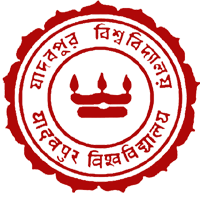To trace the history of Jadavpur University is to trace a part of India’s freedom movement, at least from the Swadeshi Movement onwards. It was 1905 -1906
Bengal stood divided. The times were feverish.
The hegemony of the British establishment had to be challenged. Education had to play a new role in this changed scenario. It had to become a new form of resistance through which the emergent nationalist spirit could be propagated. With this in mind the National Council of Education (NCE) came into being.
Its primary aim was to impart education - literary, scientific and technical on national lines exclusively under national control. To achieve self-reliance, through education. The foundation of the NCE was made possible by the munificence - scholarly as well as monetary - of the likes of Raja Subodh Chandra Mallik , Brajendra Kishore Roychowdhury of Gouripur as well as Sir Rash Behari Ghosh (first President of NCE), poet Rabindranath Tagore and Sri Aurobindo Ghosh.
In 1910 the Society for the Promotion of Technical Education in Bengal which looked after Bengal Technical Institute (which later became College of Engineering and Technology, Bengal) was amalgamated to NCE. NCE henceforth looked after the College of Engineering and Technology, Bengal which by 1940 was virtually functioning as a University. After Independence, the Government of West Bengal, with the concurrence of the Govt. of India, enacted the necessary legislation to establish Jadavpur University on the 24th of December 1955.
Now Jadavpur University has successfully established itself as a foremost Indian University with a vast repertoire of courses offered, an enviable list of faculty members and has come to be known for its commitment towards advanced study and research.
Great Benefactors
Generous donations for the great cause of national education came from Raja Subodh Chandra Mallik, after whom the road on which Jadavpur University stands, is named, Brojendra Kishore Roy Choudhury, Maharaja Suryya Kanto Acharya Choudhury and others and National Council of Education (N.C.E.), Bengal proceeded with its programme. Subsequently came a princely bequest of Rs13lakhs from Sir Rashbehari Ghosh, the legendary legal luminary.
Calcutta Corporation under the guidance of its Mayor Deshbandhu Chittaranjan Das leased out to N.C.E. the present site of Jadavpur Campus where its Engineering College was shifted in 1924. The Aurobindo Building, now housing the administrative offices, used to be the venue of teaching of the Engineering College.
Great Masters
Sri Aurobindo was the first Principal of the Bengal National College and among the teachers was luminaries like Rabindranath Tagore, Sir Gurudas Banerjee, Ananda Coomaraswamy, Surendra Nath Banerjee, Ramendra Sundar Trivedi, Radha Kumud Mukherjee, Benoy Kumar Sarkar, Sakharam Ganesh Deoskar and others.
Great Teachers
Pioneering efforts came from such dedicated and learned people like Prof. Hemchandra Das Gupta, Prof. Hiralal Roy, Prof. Satish Chandra Bhattacharyya, and many others, who introduced new disciplines and domains of engineering and changed the dimensions of the colonial engineering education. Their work has been carried further by Dr. Triguna Sen, Prof. Hemchandra Guha, Prof. Karuna Roy, Prof. M. L. Schroff., Prof. Tuhin Roy, Prof. Gopal Chandra Sen and many others.
The University has been enriched by contributions from people like Prof. Sushil Kumar De, Prof. Amartya Sen, Prof. Ganesh Chandra Bose, Prof. Sudhindranath Datta, Prof. Buddhadev Bose, Prof. Gourinath Sastri, Prof. Susovan Chandra Sarkar, Prof. Subodh Chandra Sen Gupta, Prof. Prithwis Chandra Chakravorty, Prof. Panchanan Chakravorty, Prof. Prabhat Sarbadhikary, Prof. Prafulla Kumar Guha, Rev. S.J.Antoine, Prof. Bibhuti Bhusan Sen, Prof. Satyasundar Deb, Prof. Anil Kumar Majumdar, Prof. Syamadas Chatterjee, Prof. Bankim Chandra Mukherjee, Dr. Amitava Bhattacharyya, Dr. Jnan Saran Chatterjee, Prof. Sukumar Datta and many others who steered the early progress of the Arts and Science Faculties-the new additions to the original Faculty of Engineering & Technology.
Great people behind Jadavpur University
The Logo

Aims & Objectives
Founding members of National Council of Bengal, the parent body of the Jadavpur University, in 1906 set the goal "To achieve self reliance through empowerment of Youth by imparting Best of Global Knowledge".
Today the University also aims :
- To promote and pursue higher education by linking up traditionally separated subjects in the light of the ever-changing global scenario.
- To explore new dimensions of academic administration free of bureaucratic impediments.
- To set up a role model for academic leadership.
Future Plans
- Strengthening of existing departments catering to postgraduate studies and advanced level research.
- Introduction of new courses in Emerging and Frontier areas of study.
- Improvement of Teaching and Learning process with modern electronics and multimedia aids.
- Trans disciplinary research and development through schools and centres.
- Functioning as a nodal centre for academic and technical human resource development.
- Augmenting infrastructure facilities to match latest trends.
- Academic and admin1istrative reforms and office automation.
- Setting up platforms for close interaction with industries, National R&D Laboratories and neighboring institutions.
- Providing further quantum boosts to existing amenities, equipments and facilities by arranging funds from various funding agencies.